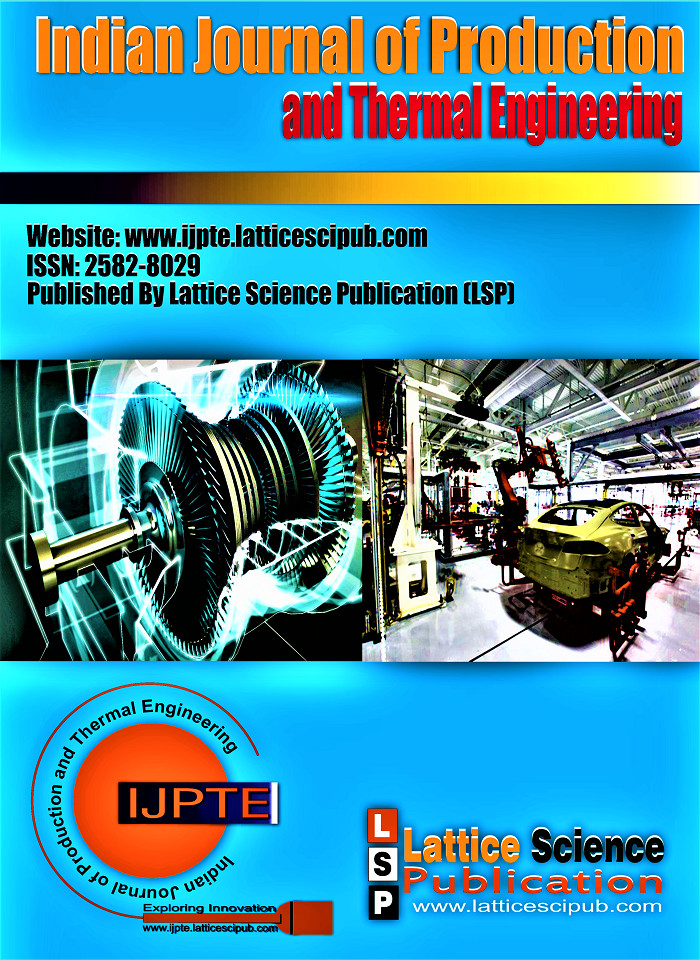Role of Power Electronics Devices in Grid Integration with Renewable Energy Source (Wind) and Challenges
Main Article Content
Abstract
We know that to growing population in India this time to use the renewable source to generate the electricity and most of the government and private companies do this very confident way. We know that the main renewable energy sources in our word is sun and wind with the help of sun and wind most of the company are situated the plant at that places where the efficiency and generation of electricity is more and more accuracy and fulfill the requirement of the electricity demand. Where this is depending upon the mostly to the renewable energy there to connect this farm to the grid system the power electronics devices play a very important role. We can say that yes wind energy and solar energy is the future management which is fulfill the requirement of the electricity generation demand. In this paper we discuss the different type of power electronics devices which is used in wind power generation system. In this paper we also discuss about some type of challenged which is coming when these farms connected to the grid.
Downloads
Article Details

This work is licensed under a Creative Commons Attribution-NonCommercial-NoDerivatives 4.0 International License.
How to Cite
References
IRENA, “Wind energy,” 2019. [Online]. Available: https://www.irena. org/wind
World Wind Energy Association, “ Wind Power Capacity Worldwide Reaches 597 GW, 50,1 GW added in 2018,” 2018, Accessed 2019-09-17. [Online]. Available: https://wwindea.org/blog/2019/02/25/ wind-power-capacity-worldwide-reaches-600-gw-539-gw-added-in-2018/
Iea, “Market report series: Renewables 2018 – analysis,” Oct 2018. [Online]. Available: https://www.iea.org/reports/renewables-2018
M. Singh and S. Santoso, “Dynamic models for wind turbines and wind power plants,” National Renewable Energy Lab.(NREL), Golden, CO (United States), Tech. Rep., 2011. [CrossRef]
Australian Energy Market Operator, “Wind turbine plant capabilities report-2013 wind integration studies,” 2013.
International Electrotechnical Commission. Technical Committee 88, Wind Turbines: Electrical Simulation Models Wind Turbines, ser. International standard. International Electrotechnical Commission, 2015, no. pt. 27, no. 1. [Online]. Available: https://books.google.com.sa/ books?id=t5HBtAEACAAJ
A. Ellis, Y. Kazachkov, E. Muljadi, P. Pourbeik, and J. Sanchez-Gasca, “Description and technical specifications for generic wtg models—a status report,” in 2011 IEEE/PES Power Systems Conference and Exposition. IEEE, 2011, pp. 1–8. [CrossRef]
Y. Kazachkov and S. Stapleton, “Does the generic dynamic simulation wind turbine model exist?” Proc. WindPower 2005, 2005.
N. W. Miller, J. J. Sanchez-Gasca, W. W. Price, and R. W. Delmerico, “Dynamic modeling of ge 1.5 and 3.6 mw wind turbine-generators for stability simulations,” in 2003 IEEE Power Engineering Society General Meeting (IEEE Cat. No. 03CH37491), vol. 3. IEEE, 2003, pp. 1977– 1983.
K. Clark, N. W. Miller, and J. J. Sanchez-Gasca, “Modeling of ge wind turbine-generators for grid studies,” GE energy, vol. 4, pp. 0885–8950, 2010.
S. Heier, Grid Integration of Wind Energy Conversion Systems. Hoboken, NJ: Wiley, 1998.
G. L. Johnson, Wind Energy Systems. Englewood Cliffs, NJ: PrenticeHall, 1985.
S. Muller, M. Deicke, and R. W. De Doncker, “Doubly fed induction generator systems for wind turbines,” IEEE Ind. Appl. Mag., vol. 8, no. 3, pp. 26–33, May/Jun. 2002. [CrossRef]
F. M. Hughes, O. Anaya-Lara, N. Jenkins, and G. Strbac, “Control of DFIG-based wind generation for power network support,” IEEE Trans. Power Syst., vol. 20, no. 4, pp. 1958–1966, Nov. 2005. [CrossRef]
M. Orabi, F. El-Sousy, H. Godah, and M. Z. Youssef, “High-performance induction generator-wind turbine connected to utility grid,” in Proc 26th Annu. INTELEC, Sep. 19–23, 2004, pp. 697–704.
J. M. Peter, “Main future trends for power semiconductors from the state of the art to future trends,” presented at the PCIM, Nürnberg, Germany, Jun. 1999, Paper R2 667-671.
H. Grüning et al., “High power hard-driven GTO module for 4.5 kV/3 kA snubberless operations,” in Proc. PCI Eur., 1996, pp. 169–183.
E.ON Netz Grid Code. Bayreuth, Germany: E.ON Netz GmbH, Aug. 1, 2003.
D. Foussekis, F. Kokkalidis, S. Tentzevakis, and D. Agoris, “Power quality measurement on different type of wind turbines operating in the same wind farm,” presented at the EWEC (Session BT2.1 Grid Integration), Madrid, Spain, Jun. 16–19, 2003.
Electromagnetic Compatibility, General Guide on Harmonics and Interharmonics Measurements and Instrumentation, IEC Standard 61000-4-7, 1997





